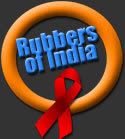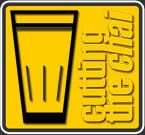Painted Dreams
 One of the little excitements during our school days was to gaze at the film posters - on the walls of the Shillong Civil Hospital - as our rickety school bus brattled by. The posters usually changed every Wednesday or Thursday and had a rectangular piece of printed paper pasted atop providing details about the name of the cinema hall and the show timings. There were only a handful of cinema halls - Bijou, Payal, Dreamland, Mini Dreamland (below Dreamland and popular for B-grade stuff) and Anjalee (for all the foreign flicks). There was a Kelvin too (very popular with my parents as it showed Bengali movies), but then it burned down one night, and Singhania Talkies which the Ramakrishna Mission took over and turned it into a library. Besides there were the military run theatres (Rhino, Soltee and the like).
One of the little excitements during our school days was to gaze at the film posters - on the walls of the Shillong Civil Hospital - as our rickety school bus brattled by. The posters usually changed every Wednesday or Thursday and had a rectangular piece of printed paper pasted atop providing details about the name of the cinema hall and the show timings. There were only a handful of cinema halls - Bijou, Payal, Dreamland, Mini Dreamland (below Dreamland and popular for B-grade stuff) and Anjalee (for all the foreign flicks). There was a Kelvin too (very popular with my parents as it showed Bengali movies), but then it burned down one night, and Singhania Talkies which the Ramakrishna Mission took over and turned it into a library. Besides there were the military run theatres (Rhino, Soltee and the like).
After Kelvin turned into ashes, I hardly ventured into the dark environs of the theatre and by that time the VHS revolution had begun. We pooled money and rented video cassettes and the VCP. It was a regular affair every week (sometimes on all days of the week) and there was hardly a film from that era that we would've missed (only the ones with 'scenes' in them, as it was more of a family show). Come back from school, change fast, gobble something and rush to the neighbour's drawing room which served as our theatre for many years. But we didn't like to miss the posters on the walls of the Civil Hospital. Usually printed versions of hand-painted posters, where often an untrained hand gave the hero a villanish tinge or add some unwanted kilos (at the wrong places) on the heroine.
The artists took extra care in accentuating the muscles of the hero and the bust of the female lead. The vamp gave them more liberty. With the popularity of photographic images on film posters, the look might have gotten better, but the feel is amiss. Every poster painter (even MF Hussain was one) had his unique take. I watched in awe as a giant Amitabh, Govinda. Anil Kapoor or Mithun towered over me from the top of Dreamland Talkies. Red with anger or pink in love, the blue of the evil, the brushstrokes said it all. Now missing from the walls these hand-painted movie posters are found inside art galleries ready to be the prized possession of the highest bidder.
Another source for film posters for me was Screen (bought every week by my brother), it didn't (then) have any of the movie industry masala that the other magazines carried. It was more about the business of making movies and selling them. For me the full page broadsheet posters were a big bonus. After my brother lost interest, I started getting the copies on my own. If I remember right, it cost me Rs 5. Then I too ventured off the filmi fare. Years later, I couldn't find it on the vendor's display, only to realise later that the look had changed (like so many of the newspapers and magazines).
The film poster as a medium of advertising is intriguing. At a time when there was no television (or the internet), it was the posters which let the public know about the forthcoming releases. Newspapers also carried miniature posters where they announced the show timings. Even Chitrahaar (that great favourite on Wednesday and Friday nights) displayed the poster of the film before playing the song.Historically the poster has been important as a travelling form that moves from city walls to lavatories, from pan shops to huts. Used as a decorative form in dhabas and small hotels as well as to promote film culture, the poster is both an advertisement as well as a cultural icon. Posters have circulated within urban centres for many years. Their presence outside cinema theatres and on city walls has been a prominent visual aspect of most cities of the country.
Here's a little tribute to the almost extinct art of hand-painted film posters, featuring ten milestone Hindi films (I like the term Hindustani over Hindi as an adjective for Bollywood movies):
[Click on the images for a larger view]
Aawara (1951)
Do Bigha Zameen (1953)
Mother India (1957)
Pyaasa (1957)
Kaagaz ke Phool (1959)
Mughal-e-Azam (1960)
Sahib Bibi aur Ghulam (1962)
Guide ( 1965)
Deewar (1975)
Sholay (1975)










































3 Comments:
Great to see this post. Few days back I had also reminisced about those charming painted posters. Not much fun in looking at the new posters as there is no creativity , as you pointed out "putting unwanted kilos in the wrong places", these days anymore
Hey. Was wondering if you had any clues as to where these posters woould be available. Am sure there are plenty of places to access them in Mumbai but any tips?
I don't have an idea about Bombay, but there are websites which sell them and Osian also periodically holds auctions for vintage movie posters.
Post a Comment